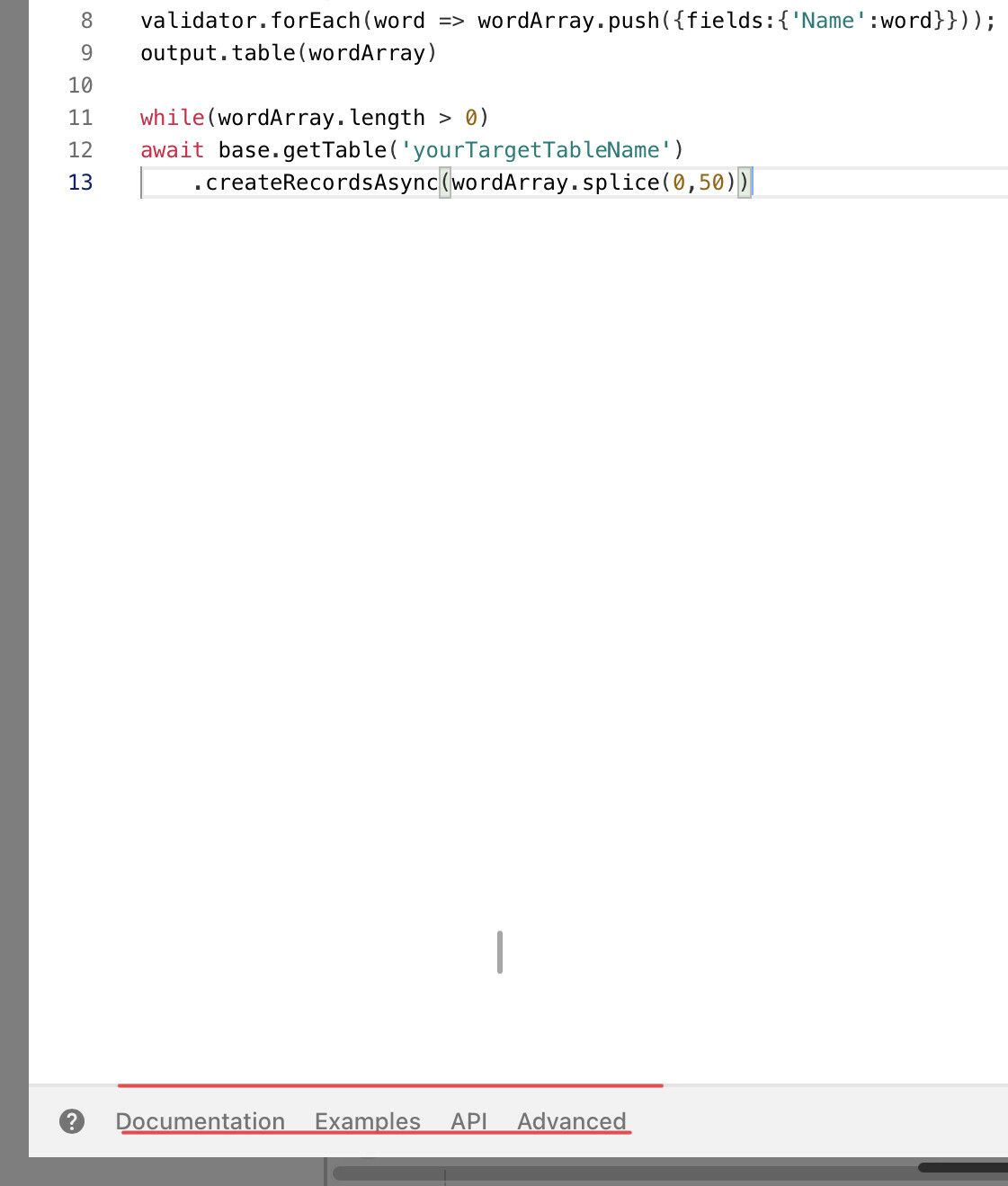Can you show it again, please?
Let’s see if I can do a bit more by first laying out some basic safe practices:
Tip #1: always declare your variables with const, UNLESS you need let.
Tip #2: you only need let if you plan to mutate/change its value; (this includes assigning to unassigned references, like doing let Name; on one line and Name='Digital_Lion' on some other one further down the event loop rabbit hole.
Tip #3: generally speaking, you only want to mutate values if and when the time comes to modify actual table contents. Even then, there are use cases for doing that without mutating your virtual structures representing the desired state of those table contents, but declaring new ones.
#3 probably won’t make much sense right now but try to revisit it after a few more weeks of learning the language…
As for your question:
const texter = 'Young apples lie on the street';
const validator = texter.split(' '); //just the words
const validator2 = text.split(/\b/); //words + whitespace
/*
* note how we declared 3 variables here, but mutated zero;
* because the fewer changes we make to the data we poll,
* the fewer opportunities we have to make mistakes;
* this is important because we make mistakes all the time;
* e.g. I had to edit the above code twice. TWICE.
* Imagine going to teach a kid how to ride a bike but breaking
* your foot on step one - that's how my pride feels right now. 😂
*/
console.log(validator);
console.log(validator2);
As you can see, String.prototype.METHOD_NAME would, in this instance, mean: “when you have a reference to a string, invoke the METHOD_NAME method by appending it to the reference itself with a dot.”
You won’t have to worry about the actual mechanics of the prototype keyword for a long time after this. But learning this bit of basic JS notation means you can now read countless other resources online.
If that doesn’t work because e.g. you searched for how to list Object keys in JS because you have an object like this:
const lionObject = {firstName:'Digital',lastName:'Lion',learning:'ECMAScript'}
and the first result says to use the Object.prototype.keys method, the other thing to try is
const lionObjectKeys = Object.keys(lionObject);
console.log(lionObjectKeys);
My terminology is embarrasingly rusty, so maybe someone more up-to-date can chip in but basically, pick a learning resource you like and bear with it for a few hours, you’ll feel like you have Airtable superpowers in no time.
Which brings us to the most important tip of them all:
Don’t torment yourself by trying to figure out JS by ear from reading Airtable docs.
You’ll just get frustrated and quit, Airtable itself links to Mozilla’s docs any chance they get for a very good reason. That reason being that while Airtable’s API docs are mostly a masterclass in technical writing, they are a bad way to learn JavaScript. In the same way an Aston Martin user manual is no resource for learning how to drive and obey traffic laws.
That is to say: Airtable docs don’t exist to teach something as vast as JS; just a very small, exotic use case of JS revolving around custom methods undestood only by Airtable.
Congrats on having the guts to push yourself out of the comfort zone, but the way to keep learning interesting and maybe even fun without it getting too frustrating is by knowing when to use the right tool for the job. Right now, your job is learning the fundamentals more so than splitting this string, the latter part will come in a matter of hours, you just need to be studying the right sources before plunging into Airtable. :slightly_smiling_face:
EDIT: On second thought, I hate the Aston Martin-as-Airtable-surrogate figure. Airtable’s waaay less to go bankrupt before the next Bond movie drops. Again.



